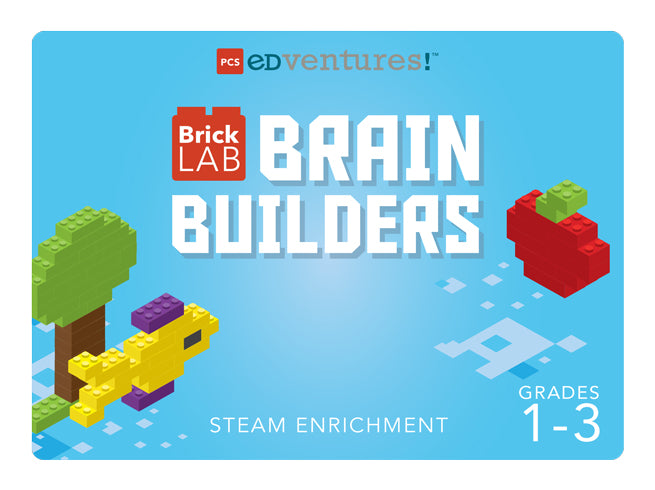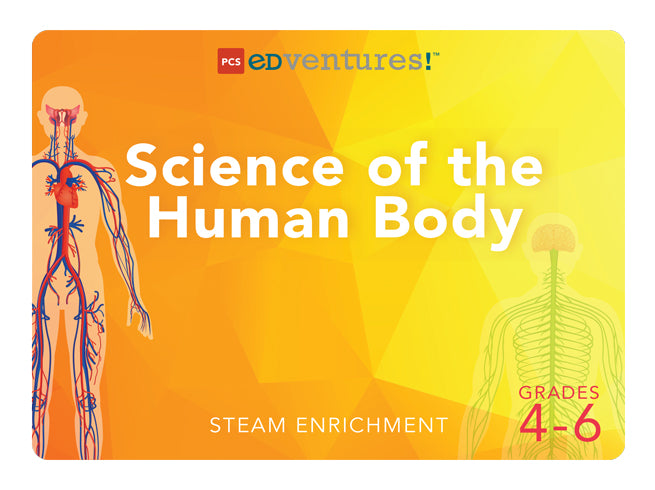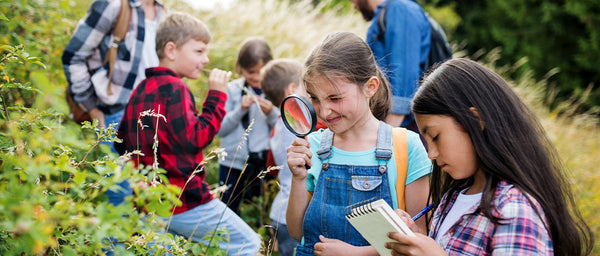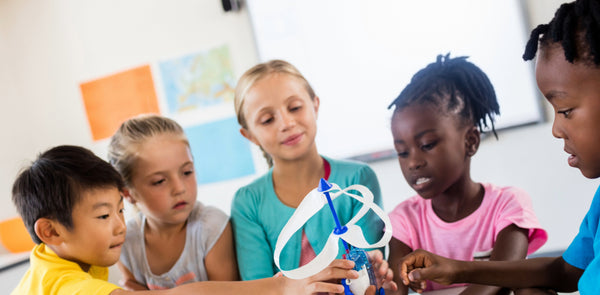
4 Ways to Reinforce Resilience with STEM
Resilience. This powerful, ten-letter word buzzes around the world of education to describe children, educators and families. But what does resilience mean?
“Resilience is about thoughts, feelings and behaviors that can be learned, and can help you bounce back after facing adversity…building resilience in children is key to helping your child prepare for what the future may hold” (LaFountain, 2021).
Now, what does resilience look like within a person, especially a child? Based on the research of pediatrician Dr. Ken Ginsberg, resilience consists of seven essential components:
1. competence
2. confidence
3. connection
4. character
5. contribution
6. coping
7. control
Everyday experiences teach these valuable skills and STEM activities are a great way to embed them into daily instruction. PCS Edventures’ immersive programs provide authentic opportunities that reinforce the 7 components of resilience in children. Our interactive, collaborative lessons encourage learners to embrace challenges and find success through failure. Engaging STEM discussions promote positive mindsets and foster meaningful connections among peers.
Let’s explore how three of our exciting STEM programs impact students’ resilience: BrickLAB Brain Builders (Grades 1-3), Science of the Human Body (Grades 4-6) and ESPORTS (Grades 6-12).
Click the images below to learn more about each program.
Learners collaborate and use signature BrickLAB Perfect Bricks to problem-solve exhilarating science and engineering challenges.
Through exercising and movement, learners examine the human body. Fast-paced engineering activities encourage teamwork and problem-solving.
Led by virtual instructors and standards-aligned curriculum, ESPORTS challenges students to learn collaboration, frustration management, and leadership skills... all while designing games!
Read to discover 4 powerful ways STEM activities reinforce resilience in children of all ages.
1. Embrace Challenges
There is nothing quite as thrilling as the faces of learners puzzling through a STEM activity! PCS Edventures’ creative, academic design challenges task learners with problem-solving in various ways. Hands-on STEM lessons motivate them to embrace new obstacles. In turn, they gain two components of resilience: competence and control.
Competence, the ability to handle different situations, is developed through experiences encouraging children to grow their strengths while embracing mistakes. BrickLAB Brain Builders creates a unique experience through teaching standards in Science, Math, ELA and Social Studies. The variety of academic tasks provides learners the opportunity to excel in areas of confidence. Equally powerful are the moments learners tackle challenges in academic areas they find difficult. Reaching a goal after experiencing missteps along the way inspires confidence and reinforces competence.
Let’s take a look at another way to challenge learners — using movement! Science of the Human Body requires control as students actively participate in group work when investigating scientific concepts. During these energetic STEM activities, children explore control and understand the ways their actions and choices cause events. They grasp the importance of keeping the future in mind when setting goals and making decisions, further strengthening components of resilience.
Game design is no easy feat, but it is a rewarding one! Participating in virtual ESPORTS challenges motivates learners to exercise competence and control. These educational experiences do not require any gaming experience, making them accessible to all. Learners in grades 6-12 work in teams to eagerly problem-solve and gain important new life skills.
2. Discover Success Through Failure
A confident child believes, or trusts, in their ability to overcome challenges. With PCS Edventures' interactive lessons, learners have multiple chances to plan for and encounter setbacks. By overcoming STEM obstacles in a safe learning space, they organically discover that failure is experienced by everyone and is key to success. Our blog, Failure is Advantageous, highlights how experimentation promotes real-world success.
Here are a few ways that our STEM programs naturally embed opportunities to overcome obstacles:
We motivate learners to push their design builds to the limit and beyond!
During engineering challenges, educators are often prompted to encourage learners to enhance their designs. For instance, make the structure bigger, even if it becomes unstable, or add weights until it reaches its breaking point.
Learners understand their designs might not withstand the challenge, and that’s okay! Through trial and error and revisions, they discover the road to success is usually bumpy. Failure is awesome!
We plan experimentation during partner work and group work.
Lessons may require learners to collaborate and build a structure without a plan, or to apply what they’ve learned to a real-world concept.
Experimentation with peers helps learners feel safe when trying new things. They understand they are not alone in experiencing obstacles — tackling new challenges is hard, but rewarding.
We include optional challenges or extension opportunities.
Educators can choose various tasks for learners to complete. These extension tasks require different skills, such as writing or math.
Challenges and extensions are vital when pushing learners out of their comfort zone. Through supported instruction, their understanding is expanded in new ways.
3. Promote Positive Mindsets
Presenting opportunities that nurture a positive mindset is fundamental when enhancing a child’s resilience. Our collaborative design challenges create positive experiences that build character and strengthen coping strategies.
What is “character” in a child? Often, a child with strong character is considered a role model. They acknowledge how their behavior affects others and strive to understand, care and act on honorable values.
How is a child’s character strengthened through STEM activities? Character is built through interactive challenges that require teamwork. While all PCS Edventures’ programs require a great deal of collaboration, Science of the Human Body does this brilliantly. Learners cooperate when using hands-on materials such as stethoscopes to listen to one another’s lungs or when tasked with inventing moves that contract different muscles. Working together to reach success is sure to strengthen an individuals’ character!
STEM challenges are, well, challenging! Not only do they require strong character to collaborate, but also strong coping skills. Challenges teach children how to combat stress with positive strategies and mindfulness. Programs such as BrickLAB Brain Builders include multiple opportunities for learners to review their design challenges, discuss and make changes. Group discussion allows children to connect and reflect, as well as share their positive thinking.
ESPORTS seamlessly intertwines social-emotional learning with gaming challenges. The standards-aligned curriculum encourages learners to effectively communicate, assist teammates and become productive leaders. Furthermore, these skills are applied to the personal, professional and educational lives of participants. The interactive lessons are perfect for strengthening character and coping strategies in our 6-12 grade learners.
Discover how STEM further supports learners’ social-emotional learning by visiting our blog STEM for SEL Support.
4. Cultivate Connections
Discussions are powerful elements of successful STEM lessons. PCS Edventures embeds partner work, group work and whole class discussion into every activity. Included are meaningful, open-ended questions asking “why” or “how,” which spark rich conversations among learners. It’s amazing how deeply children cultivate connections with educators and peers when contributing to these collaborative experiences.
There are 12 creative lessons in BrickLAB Brain Builders and each contains unique building tasks. Engaging discussions are essential throughout each design process. Learners share missteps, inspiring peers and providing them with strategies to use when overcoming individual obstacles. These conversations encourage learners to help each other navigate setbacks and move forward, fortifying resilience.
Science of the Human Body includes plenty of group work in its active tasks! Learners constantly collaborate while moving through immersive experiences. Whether listening to each other’s heartbeats or examining one another’s eyes, they connect through their learning. While individuals contribute to these rich conversations with peers, connections naturally flourish. Positive connections are a necessary component in resilience because they provide reassurance and support.
Do you want to foster strong connections among peers, but don't know the best way to form productive groups? We have you covered! Check out our blog, Student Grouping Strategies to Maximize Engagement and discover grouping methods that’ll establish many classroom connections.
Remember — Resilience is Fostered with STEM!
When it comes to embedding opportunities that reinforce resilience in children, STEM lessons are essential. From the start, learners benefit from exciting, hands-on challenges that ignite collaboration and boost self-confidence. What’s more, as learner resilience blossoms, educators find new opportunities to facilitate during lessons and engage with individuals. You'll be amazed at how quickly learners and educators thrive when implementing one of PCS Edventures' valuable programs!
Follow Us on Twitter:
Tune in to our Twitter for more resources to help you integrate STEM into your learning environment! Our team shares amazing tips that are sure to enhance your instruction.

Author: Marissa Rosol
As a 4th-grade elementary teacher and instructional coach, Marissa believes hands-on learning is the key to student engagement. Her love for literacy, STEAM and student collaboration guides her instruction and professional development sessions.
References:
BIFROST DIGITAL FORGE LLC. (2021). STEM Forged. Retrieved November 11, 2022 from https://www.stemforged.com/
LaFountain, Kimberly. (2021, May 18). The Seven Cs of Resilience and How Parents Can Build Resilient Children. Retrieved November 11, 2022 from https://www.lifespan.org/lifespan-living/seven-cs-resilience-and-how-parents-can-build-resilient-children
Fostering Resilience. Retrieved November 11, 2022 from https://www.fosteringresilience.com/about.php












